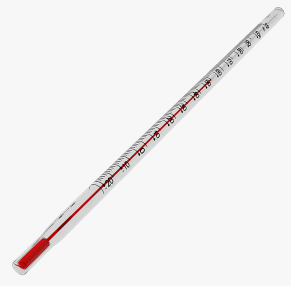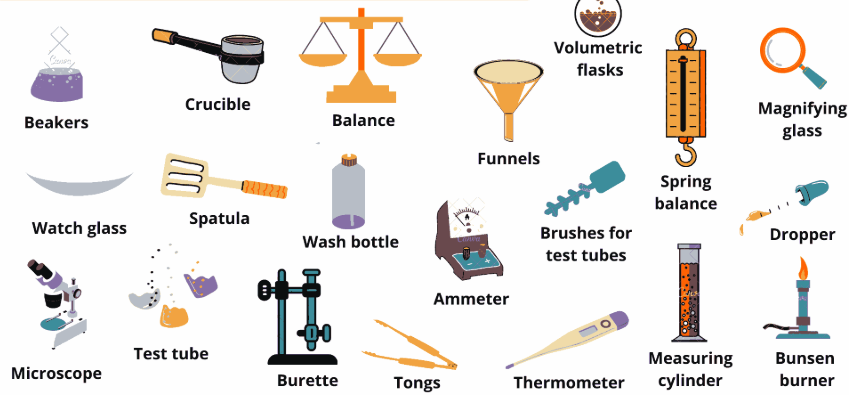20 Common Laboratory Apparatus and Their Uses With Pictures
Labs are critically important in tackling knowledge inquisitiveness within different fields of science. They are the central locations for running experiments, as well as formulating and solving hypotheses and providing new knowledge of nature. For these tasks to be accomplished, various laboratory apparatus are used as indicated below It therefore becomes important for students, researchers, and other professionals to acquaint themselves with these tools and their usage.
This article intends to enlighten the reader with information on the basic 20 common laboratory apparatus and their uses. In studying their roles, we hope to give a comprehensive view of how these tools support scientific procedures. Every one of them mentioned is the component of lab equipment and the functions are essential in carrying out the experiments.
20 Common Laboratory Apparatus and Their Uses
There are many different kinds of laboratory apparatus used in schools, all of which serve different purposes. Here, we will explore some of the most common types of laboratory apparatus found in a school science laboratory, along with their uses:
1. Beakers
There are flared cylindrical beakers with flat bases which are commonly used in laboratories. It is available in different sizes which are used as tools for mixing, heating, and measuring liquids. Most of the time Beakers do not have a spout while some do thus, they can be used for multiple purposes within a lab.
2. Test Tubes
Test tubes are slender tubular conical containers that are made of glass or plastic. It is a container used to store, stir, or warm small amounts of fluids or reagents. Chemical equations require the use of test tubes to ensure that observations and results are tested on a small scale.
3. Bunsen Burner
The Bunsen burner is another widely used heating apparatus in laboratories. It yields one open flame which has a regulating mechanism to control the flame’s intensity. This piece of laboratory equipment is meant to heat chemicals, sterilize apparatuses, and carry out combustion experiments.
4. Microscope
Microscopes are important instruments that provide large enlarged views of small particles in the sample region, thus allowing the scientist to examine microorganisms, cells as well and other structures. Contemporary microscopes can be optical or electronic and transmit clear images necessary for biological and material investigations.
5. Graduated Cylinder
A graduated cylinder is a cylinder-shaped container having a tall and narrow neck with lines of measurement on its sides. It is used to determine the correct volume of liquid content. This apparatus is important in experiments where the volume of liquid reagents has to be determined to the nearest milliliter.
6. Petri Dishes
Petri dishes are shallow cylindrical dishes that have a lid. Mostly they are employed as a means of culturing microorganisms under optimum conditions. Most commonly used in microbiology and cell biology, a Petri dish is a shallow glass or plastic plate.
7. Pipettes
Pipettes are devices that are used to auscultation of auscultation-specific measures of liquid solutions between two distinct vessels. They are of graduated, volumetric, and micropipettes kind and are very important in laboratories where accurate measurement of liquids is required.
8. Funnel
They are used to deliver liquids or particles with a tight structure to a receptacle with a small opening. Combined with filter paper they are crucial for filtering procedures that allow for the separation of solid substances from liquids.
9. Thermometer
A thermometer is an instrument that if used measures temperature, which is an important parameter in many experiments. There are two major types of laboratory thermometers: digital and analog which are constructed to be accurate within a broad temperature range.

10. Balance
Balances are utilized in the determination of the mass of substances. Results obtained by analytical balances are highly accurate and are useful for measurements of solids or powders in laboratories.
11. Erlenmeyer Flask
They are conical glass containers with a narrow shoulder and their major uses include mixing and heating of liquids. Their design won’t allow fluids to spill and ensure that they are handled with a lot of ease.
12. Tongs
Lab tongs are used to grasp or manipulate hot objects, such as beakers and crucibles. They shield the user from burns and help him or her to handle hot utensils safely.
13. Droppers
Droppers are small devices that are used in dispensing liquids in drops. They are typically employed in titrations where needing to measure the reagents will take place in drops.
14. Laboratory Stand with Clamps
This is used to support and fix other equipment when conducting experiments. Laboratory stands with clamps are multi-functional equipment that offers support to a burette, test tube, or any piece of apparatus.
15. Crucible
A crucible is a small cup made from a material that is resistant to heat, and which is used to melt or merely heat a substance. They consist of porcelain or metal and are applicable where chemical changes or metallurgical processes take place.
16. Reagent Bottles
Reagent bottles are used for the storage of different chemicals safely. These bottles are of glass or plastics and available in various capacities which avoid mixing and contamination of substances within them.
17. Safety Goggles
Safety goggles are personal protective equipment usually used to protect eyes from chemical spillage, heat, or any debris. It is required in laboratories to minimize dangers from users throughout the experiment.
18. Filter Paper
Filter paper is used with funnels for purposes of sorting out particulate matter from a liquid or solution. As a filter aid, it plays a role in making clear the solution, or the separation of precipitates in gallery filtration.
19. Mortar and Pestle
This apparatus is used for milling and maceration of solid materials into fine particles. Mortars and pestles are of ceramic, glass, or metalwork and can not be done without especially when preparing reagents or samples.
20. Spectrophotometer
A spectrophotometer determines the amount of light that is taken by a solution. It is in most cases used in chemistry and biology for the determination of quantities of substances to obtain information on concentration characteristics and other chemical properties.
Importance of Laboratory Apparatus
Equipment in a lab constitutes the base of any experimentation. Its accuracy, stability, and appearance make resulting experiments precise and repeatable. Apart from helping with the preliminary research, these tools are also helpful in educational circumstances by giving students practical experiences.
An appreciation of what the equipment is and what it is used for goes a long way in ensuring efficient experimentation and little room for error. It is also pertinent to fix on proper use and care of this laboratory equipment so that they may last long and be free from any accidents.
Tips for Handling Laboratory Equipment
- Read Instructions: It is important to heed the manufacturer’s instructions on usage of laboratory apparatus.
- Wear Protective Gear: I need to wear goggles, gloves, and a lab coat to avoid getting affected by dangers that may be around me.
- Clean Regularly: Wash and distribute equipment appropriately, particularly to avoid cross-contamination.
- Check for Damage: Apparatus should be checked for cracks, leaks, or any other sign of damage before use.
- Practice Careful Handling: Do not be rough on delicate equipment for instance glassware/drinkware.
Conclusion
There is no doubt that the apparatus is one of the most important components of a laboratory apparatus. Starting from the simplest ones such as beakers, and test tubes to the most complex like the spectrophotometer, all play out their part in determining the effectiveness of experiments. Anyone working in a laboratory setting should familiarize himself or herself with laboratory equipment and its function. When used correctly and understood these tools enable scientists to unlock the workings of the world we live in. This is an advance in creating an enhanced comprehension of scientific laboratory equipment and its relevance: making it a stronger terrain for creating scientific literacy and creativity. This Defense should prove useful to any student, researcher, or educator as improved familiarity with lab apparatus will improve experiments and lead to a safer and more efficient lab experience.







